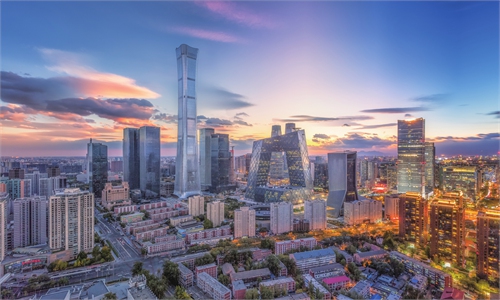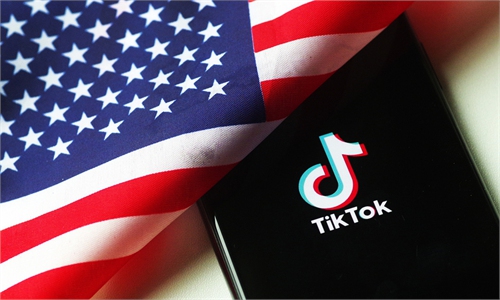Share This
Wednesday, September 16, 2020
Do you know about Malaysia Day?
 Rightways - Sowing the seeds of Success:
Think Global, Act Local; Change & Grow Rich; Sow as You Reap & Soar High!
Richard Tan
MBA(UK), BCA(NZ), AMA(USA),MMIM
Rightways - Sowing the seeds of Success:
Think Global, Act Local; Change & Grow Rich; Sow as You Reap & Soar High!
Richard Tan
MBA(UK), BCA(NZ), AMA(USA),MMIM
Tuesday, September 15, 2020
All steady on the home front in Penang residential properties
Knight Frank Malaysia executive director Mark Saw says there are pockets of success by some developers reporting bookings and sales for their affordable homes during the movement control order (MCO) period (from March 18 to May 3), despite the fact that physical viewings were disallowed.
“In this challenging environment, developers with a strong brand name and good delivery of quality products should still achieve decent returns and the gap between higher and lower quality properties will become more evident with better sales for those able to deliver.
“These factors will play a critical role in determining the success of developments. It has become a buyer’s market and many deals are being offered by developers to attract first-time buyers as opposed to investors who have been temporarily sidelined, ” he tells StarBizWeek.
Due to the Covid-19 pandemic, Saw says buyers’ preferences and timings may change, with decisions being put on hold due to job security, ample choices and rentals being more competitive.
CBRE|WTW director Peh Seng Yee says the pandemic’s impact has been softened in the second half of the year with the recovery MCO (which was implemented from June 10).
 CBRE|WTW
director Peh Seng Yee says the pandemic’s impact has been softened in
the second half of the year with the recovery MCO (which was implemented
from June 10).
CBRE|WTW
director Peh Seng Yee says the pandemic’s impact has been softened in
the second half of the year with the recovery MCO (which was implemented
from June 10).“Hence, the residential market is expected to remain resilient for the second half of 2020. Significant growth is not expected yet as the issue of property overhang, lack of spending confidence by consumers and stringent lending policies by banks are expected to still linger for the remainder of the year.”
Additionally, both Saw and Peh agree that the reintroduction of the Home Ownership Campaign (HOC) was a much-needed boost to the local property market. The government reintroduced the HOC in June under the Short-Term Economic Recovery Plan (Penjana).

“Developers are experiencing a pick-up in bookings by buyers compared with the first half of 2020, which was mainly affected by the MCO.
“However, the encouraging bookings have yet to be fully translated into good actual sales, due largely to stringent lending policies by the bank and the challenges and uncertainty in the economy and job market.”
Saw also believes the HOC will be a short-term reprieve for the local property market.
“The HOC initiatives will only be a temporary measure. For the long term, developers should carry out proper feasibility studies to determine the marketability of their products before commencing developments and ending up with unsold units.”
According to Saw, the volume of residential transactions in Penang decreased 19.7% to 2,748 units in the first quarter of 2020 compared with 3,422 units in the fourth quarter of 2019.
“The value of transactions in the residential sub-sector during the first quarter (RM1.06bil) indicated a drop of 17.2% compared with RM1.28bil in the fourth quarter of last year, ” he says.
Under the HOC, stamp duty exemption will be provided on the transfer of property and loan agreement for the purchase of houses priced between RM300,000 and RM2.5mil.
Meanwhile, the exemption on the instrument of transfer under the HOC is limited to the first RM1mil of the home price, while full stamp-duty exemption is given on loan agreement effective for sales and purchase agreements signed between June 1 and May 31,2021.
The government has also announced real property gains tax (RGPT) exemption for Malaysians for the disposal of up to three properties between June 1,2020 and Dec 31,2021.
The HOC was kicked off in last January to address the overhang problem in the country. The campaign, which was initially intended for six months, was extended for a year.
It proved successful, generating total sales of RM23.2bil in 2019, surpassing the government’s initial target of RM17bil.
Meanwhile, Knight Frank in its Real Estate Highlights Research for the first half of 2020 says that amid the current global recession, Invest Penang has revised downwards its foreign direct investment (FDI) target for 2020 to RM5mil.
“This will be supported by the shift towards Industry 4.0 and the various tax incentives and reinvestment allowances as announced under Penjana that seeks to promote Malaysia as a choice destination for FDIs.”
To clear RM2.6bil worth of 3,043 overhang units in the state, Knight Frank says the Penang local government, housing, town and country planning committee has announced that the state will reduce the minimum price threshold for foreign property ownership by up to 40% starting from June 11,2020.
“Ceiling prices for stratified properties on the island will be reduced by up to 20% from RM1mil to RM800,000 and on the mainland, from RM500,000 to RM400,000.”
In the high-end condominium segment, Knight Frank says IJM Perennial has put on hold the development of The Light City.
“Prior to the Covid-19 pandemic, the group had indicated that it would resume development in August 2020. To be developed over a period of more than four years, Phase 1 will feature a mall with 680,000 sq ft net lettable area, the Penang Waterfront Convention Centre, a four-star hotel with 500 rooms, offices and the ‘Mezzo’ residential condominiums.
“Meanwhile, for Phase 2, there are plans for a 300,000-sq-ft mall, a five-star hotel with 250 rooms, offices, the ‘Essence’ residential condominiums and possibly an experiential theme park. It is worth noting that the commencement of Phase 2 will be determined by the sales of the Mezzo condominiums and the occupancy of the mall.”
As for the office sub-sector in Penang, Knight Frank says the average occupancy rate for four prime buildings monitored in George Town remained stable at 89%.
“According to the latest National Property Information Centre report, the average occupancy rate in the state continued to hold steady at 81.4% in the first quarter of 2020 (compared with 81.3% in the fourth quarter of 2019).”
Source link
Related posts:
Young buyers flock to property market

It’s the right time to invest’
Do we still need an office?
Related news:
Potential new DIBS boon
PropertyGuru raises S$300mil to accelerate growth in SE Asia
Minister: Unsold high-end properties here to be offered to HK ...
Vacancy tax – timely solution to problem of property overhang
Insight - Solution sought for unsold high-end properties | The ...
Vacancy tax on back burner | The Star
EXCLUSIVE It's off!: Proposed tax on unsold property put on ..
Homestay guests are not 'tenants' | The Star
Homestay guests are not 'tenants' | The Star
House rules to rein in homestays Homestay guests are not ‘tenants’
http://mystar.newspaperdirect.com/epaper/viewer.aspx#
Developer uncovers scam plot | The Star
Developer uncovers scam plot | The Star
 Rightways - Sowing the seeds of Success:
Think Global, Act Local; Change & Grow Rich; Sow as You Reap & Soar High!
Richard Tan
MBA(UK), BCA(NZ), AMA(USA),MMIM
Rightways - Sowing the seeds of Success:
Think Global, Act Local; Change & Grow Rich; Sow as You Reap & Soar High!
Richard Tan
MBA(UK), BCA(NZ), AMA(USA),MMIM
Monday, September 14, 2020
Educated yet amoral: GPT-3 AI capable of writing books sparks awe
 |
| An AI technology has won praise for its ability to generate coherent stories, novels and even computer code. — AFP Relaxnews |
An artificial intelligence (AI) technology made by a firm co-founded by billionaire Elon Musk has won praise for its ability to generate coherent stories, novels and even computer code but it remains blind to racism or sexism.
GPT-3, as Californian company OpenAI’s latest AI language model is known, is capable of completing a dialogue between two people, continuing a series of questions and answers or finishing a Shakespeare-style poem.
Start a sentence or text and it completes it for you, basing its response on the gigantic amount of information it has been fed.
This could come in useful for customer service, lawyers needing to sum up a legal precedent or for authors in need of inspiration.
While the technology is not new and has not yet learnt to reason like a human mind, OpenAI’s latest offering has won praise for the way its text resembles human writing.
“It is capable of generating very natural and plausible sentences,” says Bruce Delattre, an AI specialist at data consulting agency Artefact.
“It’s impressive to see how much the model is able to appropriate literary styles, even if there are repetitions.”
GPT-3 is also capable of finding precise responses to problems, such as the name of an illness from a description of symptoms.
It can solve some mathematical problems, express itself in several languages, or generate computer code for simple tasks that developers have to do but would happily avoid.
Delattre tells AFP it all works thanks to “statistical regularities”.
“The model knows that a particular word (or expression) is more or less likely to follow another.”
Billions of web pages
Amine Benhenni, scientific director at AI research and development firm Dataswati, tells AFP that “the big difference” compared to other systems is the size of the model.
GPT-3 has been fed the content of billions of web pages that are freely available online and all types of pieces of written work.
To give an idea of the magnitude of the project, the entire content of online encyclopaedia Wikipedia represents just 3% of all the information it has been given.
As such, it does not need to be retrained to perform tasks, as previous models did, when a new subject is introduced like medicine, law or the media.
Give it just a handful of examples of a task to do, such as completing a sentence, and it will then know how to complete any sentence it is given, no matter what the subject – a so-called “few-shot” language model.
“It’s amazingly powerful if you know how to prime the model well,” Shreya Shankar, an AI-specialised computer scientist, said on Twitter after having used GPT-3.
“It’s going to change the ML (machine learning) paradigm.”
Despite the hype, however, GPT-3 is only 10th on the SuperGLUE benchmark that measures the language-understanding of algorithms.
And that’s because some users demonstrated that when asked absurd questions, the model responds with senseless answers.
For instance, developer Kevin Lacker asked: “How many eyes does the sun have?”
“The sun has one eye,” it responded, Lacker wrote on his blog.
Fake reviews, fake news
Claude de Loupy, co-founder of French startup Syllabs that specialises in automated text creation, says the system lacks “pragmatism”.
Another major problem is that it replicates without a second thought any stereotype or hate speech fed during its training period, and can quickly become racist, anti-semitic or sexist.
As such, experts interviewed by AFP felt GPT-3 was not reliable enough for any sector needing to rely on machines, such as robo-journalism or customer services.
It can however be useful, like other similar models, for writing fake reviews or even mass-producing news stories for a disinformation campaign.
Concerned about “malicious applications of the technology”, OpenAI, which was co-founded in 2015 by Musk who has since left, and is financed by Microsoft among others, chose not to release the previous version of the model, GPT-2, in February 2019.
Originally a non-profit, OpenAI then became a “capped profit” company, which means investors get a capped return.
And in June, the firm changed tack and opened its GPT-3 model to commercial use, allowing for user feedback.
A step Claude de Loupy says could yield big profits.
There is “no doubt that the amount of text generated by AI is about to explode on the Web”. – AFP
Source link
GPT 3 Demo and Explanation - An AI revolution from OpenAI
4.89K subscribers
GPT 3 can write poetry, translate text, chat convincingly, and answer abstract questions. It's being used to code, design and much more. I'll give you a demo of some of the latest in this technology and some of how it works.
GPT3 comes from a company called OpenAI. OpenAI was founded by Elon Musk and Sam Altman (former president of Y-combinator the startup accelerator). OpenAI was founded with over a Billion invested to collaborate and create human-level AI for the benefit of society.
GPT 3 has been developed for a number of years. One of the early papers published was on Generative Pre-Training. The idea behind generative pre-training (GPT) is that while most AI's are trained on labeled data, there's a ton of data that isn't labeled. If you can evaluate the words and use them to train and tune the AI it can start to create predictions of future text on the unlabeled data. You repeat the process until predictions start to converge.
The newest GPT is able to do a ton. Some of the demos include:
- GPT 3 demo of how to design a user interface using AI
- GPT 3 demo of how to code a react application using AI
- GPT 3 demo of an excel plug-in to fill data using AI
- GPT 3 demo of a search engine/answer engine using AI
- GPT3 demo of command line auto-complete from English to shell commands
And more. I've posted all the embedded tweets and videos on my site:
https://gregraiz.com/gpt-3-demo-and-e...
You can also follow me on twitter here:
https://www.twitter.com/graiz
The paper on Language Models are Few-Shot Learners is available to read:
https://arxiv.org/abs/2005.14165
Caption author 英语爸爸
(Chinese (China))
OpenAI GPT-3: Beginners Tutorial
OpenAI has released GPT-3, a state-of-the-art language model made up of 175 billion parameters. In this video, I'll create a simple tutorial on how you can use OpenAI's API to use the GPT-3 model.
The previous OpenAI GPT model that is GPT-2 had 1.5 billion parameters and was the biggest model back then. GPT-3 can write poetry, translate text, chat convincingly, and answer abstract questions.
Link to Shreya's Repo : https://github.com/shreyashankar/gpt3...
Link to the Notebook : https://github.com/bhattbhavesh91/gpt...
Link to Request for API Access : https://lnkd.in/eUTisGR
If you do have any questions with what we covered in this video then feel free to ask in the comment section below & I'll do my best to answer those.
If you enjoy these tutorials & would like to support them then the easiest way is to simply like the video & give it a thumbs up & also it's a huge help to share these videos with anyone who you think would find them useful.
Please consider clicking the SUBSCRIBE button to be notified for future videos & thank you all for watching.
You can find me on:
Blog - http://bhattbhavesh91.github.io
Twitter - https://twitter.com/_bhaveshbhatt
GitHub - https://github.com/bhattbhavesh91
Medium - https://medium.com/@bhattbhavesh91
#GPT3 #NLP

Read more:
Will GPT-3's AI make writers obsolete? - without bullshit

Related posts:
Global AI collaboration to fight pandemic, revive economies
The future is AI technology
Developing AI specialists through collaboration

AI Superpowers: China, Silicon Valley, and the New World Order; Singapore tries its own path in clash
 Rightways - Sowing the seeds of Success:
Think Global, Act Local; Change & Grow Rich; Sow as You Reap & Soar High!
Richard Tan
MBA(UK), BCA(NZ), AMA(USA),MMIM
Rightways - Sowing the seeds of Success:
Think Global, Act Local; Change & Grow Rich; Sow as You Reap & Soar High!
Richard Tan
MBA(UK), BCA(NZ), AMA(USA),MMIM
Sunday, September 13, 2020
Asia’s Journey at 60, what does independence mean, the promise & perils
 |
| What does Independence mean for former colonies |
 |
How its leaders forge cohesion, heal social wounds will be true test of maturity in next 60 years
ON SEPT 16, Malaysia celebrates her 57th national day, having celebrated on Aug 31 the 63rd anniversary of independence from Britain in 1957.
What does Independence mean for former colonies?
It means that a nation is free to choose its own future independent from imperial influence. Lest we forget, colonisation in Asia arrived in the 16th century with Portuguese, Dutch and British pirateers who came, saw and conquered. They did this in the name of their king and Christianity, but it was mostly for their own well-being.
No statistic illustrates this better than the stark fact that India before colonisation in 1700 accounted for 24.4% of world GDP (Maddison, 2007) and by independence in 1947, her share was down to only 4.2% in 1950. Of course, the British left behind the English language, the rule of law and a durable administrative structure that is still being practised in many former colonies.
We should also be grateful that decolonisation (shedding of empires by the European powers) was encouraged by the post-war American administration, which basically did not want any challenges to her dominant status, British cousins or not. The result was that Hong Kong was the last of the colonies to lose her status in 1997. Considering that some Hong Kongers are still waving the Union Jack, colonial nostalgia has not lost all its fans
What matters is what the newly independent countries achieved with their sovereignty. Singapore is the exemplar that pulled herself into the ranks of advanced income status by sheer grit and determination, having almost no natural resources. Myanmar, on the other hand, was richly endowed with natural resources and had one of the best educated elites at independence in 1948. Ruled mostly by the military junta, her growth has been stunted relative to her neighbours.
The Asian Development Bank has just published an excellent book on Asia’s Journey to Prosperity, commemorating 50+ years of its establishment in 1966. The book tracked Asia’s transformation from a post-colonial era of essentially rural Asia to today’s urban and technologically driven region that accounts for roughly half of global growth.
Seen from a 60-year cycle, Asia’s transformation has been world-shattering. In 1960, Developing Asia (ex-Japan) accounted for only 4.1% of world GDP, measured in constant 2010 USD terms. That year, the EU accounted for 36.2% and the United States 30.6% respectively, together 18 times larger.
Japan was already a developed country with 7.0% of world GDP. By 2018, Developing Asia’s share increased six times to 24.0%, on par with the EU (23.2%) and the US (23.9%). This means that including Japan, Asia accounted for 31.5% of world GDP. The global GDP shares for Latin America, the Middle East, Africa and rest of the world were essentially unchanged in the last half century.
In other words, the loss in share of world GDP by Europe and the US between 1960-2018 was largely gained by Developing Asia, of which China was in its own class. China’s GDP grew 84 times over this period, whereas the other three Asian dragons, South Korea, Taiwan and Singapore, grew between 55 to 58 times. By comparison, over the same period, OECD countries, including Japan and Australia, basically grew eight times. Malaysia is in the upper pack, having grown by 35 times.
The secrets of Asia’s successful transformation deserve repeating. During this period, there was peace and general political stability, with Asian governments being fiscally prudent and willing to invest in infrastructure and people. Asia did not follow the “import substitution” model adopted in Latin America but adopted the Japanese export industrialization route. Development essentially came from a young growing population that shifted out of rural agriculture into urban centres, with pragmatic governments working hand-in-hand with markets to create jobs in new industries and services.
This raised the savings and investment levels significantly above that of the rest of the world. The state took care of macroeconomic stability, education, health and infrastructure, preparing the labour force for foreign and domestic enterprises to propell exports and growth.
Those economies that were most open to technology and innovation, including welcoming foreign investment, grew fastest. Initially, income distribution improved, but in recent years, income and wealth inequalities have widened. Furthermore, climate change issues in terms of weather change, impact on water, food and increasing natural disasters are rising in the social agenda. The geopolitical temperature has also risen with the West feeling more insecure.
Currently, China’s rise is seen as the main geopolitical rival for the West, since she is the West’s largest market, biggest supplier, toughest competitor and rival political model. But not far behind China are India and Asean, both with a culturally diverse, younger population, totalling two billion people and a US$5.8 trillion GDP, about to enter into technologically driven, middle-class income levels.
Both South and South-East Asia are about to enjoy the same demographic dividend as China, but it will take competent governments to ensure that the rise to middle and advanced income will be accompanied by good jobs and fair distribution, particularly in the face of growing protectionism, and decoupling in technology and supply chains.
Asia’s growth must be in cooperation with the West, socially, commercially and technologically. But the greatest risks are the neo-con hawks in the West who are willing to risk war to disrupt Asia’s rise.
Put simply, if Asian growth stalls, the world will lose its growth engine.
The rise of Asia for the rest of the century is neither destiny nor pre-ordained. The West will not sit by to see its leadership erode. But as McKinsey’s useful analyses on the Future of Asia opined, “The question is no longer how quickly Asia will rise; it is how Asia will lead.” Leading in a culturally diverse and complex world is not about fighting, but about how to work together, meaning competing and cooperating at the same time. The greatest Asian divide is not technology, but social polarisation driven by race, gender, religion, ideology and health/wealth inequalities, all exposed brutally by the pandemic.
 How a new generation of Asian leaders heal these social wounds and move forward without fragmentation and fighting will be the true test of Asia’s maturity in the next 60-year cycle.
How a new generation of Asian leaders heal these social wounds and move forward without fragmentation and fighting will be the true test of Asia’s maturity in the next 60-year cycle.Andrew Sheng is a Distinguished Fellow of Fung Global Institute, a global think tank based in Hong Kong. The views expressed here are his own.
Asia News Network
Source link
Related:
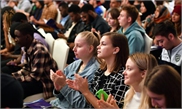 Why China manages to develop and rise despite talent outflow
Why China manages to develop and rise despite talent outflow
The US needs to ask itself: Nowadays, how many talents
worldwide will be less likely to do their research and contribute their
wisdom in the US? Can it still provide better education, better jobs and
better quality of life? The US had better not be too self-centered and
narcissistic.
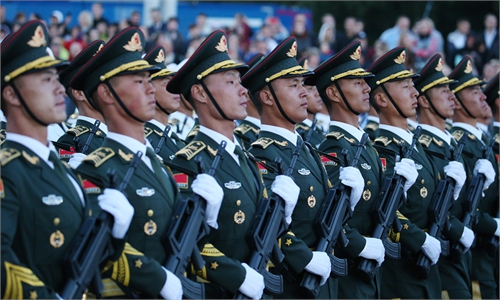 China must be militarily and morally ready for a potential war
China must be militarily and morally ready for a potential war
China must be a country that dares to fight. And this
should be based on both strength and morality. We have the power in our
hands, we are reasonable, and we stand up to guard our bottom line
without fear. In this way, whether China is engaged in a war or not, it
will accumulate the respect of the world. One day, we will show our
natural dignity and power without flexing muscles, and we will win
without fighting a war.
 Why Western media make malice toward China
Why Western media make malice toward China
Through the efforts of several generations, an open and
enterprising China through peaceful development has increasingly won
respect and support of the international community. And distorted
reporting under the double standards of the Western media will
eventually lose every ounce of their credit.
 US anti-China politicians' stirring up controversy over Mulan film location just restless clamor
US anti-China politicians' stirring up controversy over Mulan film location just restless clamor
The recent controversies over Disney's filming of its
live-action movie Mulan in China's Xinjiang Ugyur Autonomous Region and
its credits thanking security and publicity departments in Xinjiang
which offered assistance to the filming did not end here. On Friday, a
bipartisan group of US lawmakers asked Walt Disney Co. Chief Executive
Officer Bob Chapek to explain the company's contacts with Xinjiang
during the production of the film.
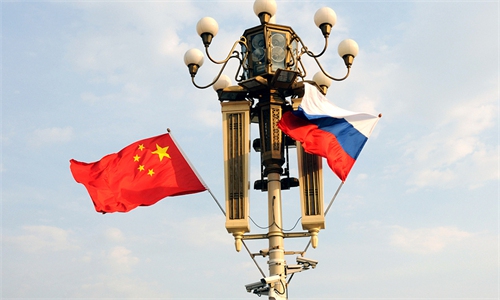 China, Russia provide more certainty to the world as the US becomes a threat: expert
China, Russia provide more certainty to the world as the US becomes a threat: expert
With the world engulfed by the deadly coronavirus, rising
violence and a collapsing international order due to the US, China's
State Councilor and Foreign Minister Wang Yi said on Friday that
China-Russia relations have become the key force of stability in a
turbulent world.Historical insight
Some have voiced concern the Golden Era between China and
the UK may have come to an end amid growing bilateral confrontations
influenced by the deteriorating Sino-US relations.
The Global Times interviewed Professor Harry T. Dickinson, renowned
British historian and Professor Emeritus of British history at the
University of Edinburgh, who shared his opinions on the development of
China, Hong Kong affairs, Sino-British relations and Sino-US relations.
Related posts:
Do you know about Malaysia Day?
In four separate speeches, Secretary of State Pompeo (pic), Attorney General Barr, National Security Adviser O’Brien and FBI Director Wr.
China and the Decline of US Power
The deep historical roots of racism
The #Blacklivesmatter protests have countries around the world examining their own problems with race.

 Colonialism
ColonialismWhy 'Gone With the Wind' should stay on HBO Max - Los ...
Hardwired for global hegemony - American freedom and democracy
Historical insight
Some have voiced concern the Golden Era between China and the UK may have come to an end amid growing bilateral confrontations influenced by the deteriorating Sino-US relations. The Global Times interviewed Professor Harry T. Dickinson, renowned British historian and Professor Emeritus of British history at the University of Edinburgh, who shared his opinions on the development of China, Hong Kong affairs, Sino-British relations and Sino-US relations. Rightways - Sowing the seeds of Success:
Think Global, Act Local; Change & Grow Rich; Sow as You Reap & Soar High!
Richard Tan
MBA(UK), BCA(NZ), AMA(USA),MMIM
Rightways - Sowing the seeds of Success:
Think Global, Act Local; Change & Grow Rich; Sow as You Reap & Soar High!
Richard Tan
MBA(UK), BCA(NZ), AMA(USA),MMIM
Saturday, September 12, 2020
TikTok Owner ByteDance to Spend Billions in Singapore After U.S. Ban
Bill Gates Says U.S. Data From TikTok Safe With Microsoft
Jul.07 -- President Donald Trump says he is considering banning TikTok in the U.S. over threats to national security as tensions continue to rise with China. Bloomberg’s Selina Wang reports on “Bloomberg Markets: China Open.”
https://www.bloomberg.com/news/videos/2020-09-11/tiktok-owner-to-spend-billions-in-singapore-video >
-
ByteDance looks to add hundreds of jobs in the nation: people
-
Chinese company wants Singapore to be base for rest of Asia
ByteDance Ltd., the Chinese owner of video-sharing app TikTok, is planning to make Singapore its beachhead for the rest of Asia as part of its global expansion, according to people familiar with the matter.
The Beijing-based company is looking to spend several billion dollars and add hundreds of jobs over the next three years in the city-state, where it has applied for a license to operate a digital bank, said the people, who asked not to be identified because of confidentiality.
The investment would come at a crucial time as the technology firm is forced to sell TikTok operations in the U.S. under pressure by the Trump administration.
ByteDance, the world’s most richly valued startup, is plowing ahead with plans to take its social media services deeper into Asia after setbacks in India and the U.K. as well as the U.S.
The internet phenomenon controlled by billionaire Zhang Yiming has long eyed Southeast Asia’s 650 million increasingly smartphone-savvy population, a region where Alibaba Group Holding Ltd. and Tencent Holdings Ltd. are also making inroads.
Read how TikTok becomes part of U.S.-China flashpoints
The plans for Singapore include establishment of a data center, the people said. Its operations there include TikTok and Lark, an enterprise software business.
ByteDance currently has more than 200 job openings in Singapore, for positions in everything from payments to e-commerce and data privacy, according to its job referral site.
The company already has 400 employees working on technology, sales and marketing in the city-state, one of the people said.
A ByteDance representative offered no comment.
Shopping Spree
Southeast Asia is rapidly evolving into a critical location for China’s largest tech corporations from Alibaba to Tencent in the face of growing hostility from the U.S. and other major developed markets. Singapore is becoming a regional base for both Western and Chinese companies because of its developed financial and legal system, and as Beijing tightens its grip on Hong Kong.
“Singapore is highly attractive to tech firms looking for a hub to address the Southeast Asian markets due to geographic proximity,” said Bloomberg Intelligence analyst Vey-Sern Ling.
“The workforce is highly educated, tech savvy and multilingual.”
In China, ByteDance also runs news aggregation app Toutiao, and TikTok’s Chinese twin Douyin. Collectively its stable of products have more than 1.5 billion monthly active users.
ByteDance is said to have generated more than $3 billion of net profit on more than $17 billion of revenue in 2019.
U.S. Deadline
Asia is a growth area for the company, especially when it is increasingly likely to miss the U.S. government’s deadline for the sale of its TikTok U.S. operations. President Donald Trump said Thursday he won’t extend his Sept. 15 deadline for the deal.
In India, TikTok is among more than a hundred Chinese-made consumer apps that are banned by the government on concerns about security. SoftBank Group Corp. is exploring gathering a group of bidders for TikTok’s India assets.
The U.K. government will likely ban TikTok from moving local user data out of the country, Bloomberg News has reported.
Gateway
Singapore, in particular, offers ByteDance the opportunity to explore an area it’s had relatively little exposure to. The company is leading a consortium that has applied for a digital-bank license from the Monetary Authority of Singapore. Other members of that group includes a private investment firm owned by a member of the Lee family that founded Oversea-Chinese Banking Corp.
The regulator will award as many as five such permits to non-banks by December. Ant Group and Tencent-backed Sea Ltd. have also applied. The city-state offers a potential gateway to the rest of Southeast Asia, where the digital lending market may reach $110 billion by 2025, according to a report by Bain & Co., Google and Temasek Holdings Pte.
(Updates with details from penultimate paragraph)
Source link
Related:
International community needs to break its silence on US highway robbery of TikTok: Global Times editorial
US' highway robbery of TikTok completely violates market principles and the spirit of the rule of law. It is a distorted hegemonic behavior under the forced intervention of the US government.
TikTok sees big potential in Southeast Asia as digital economy grows
Despite the blatant squeeze by the Trump administration of Chinese technology company TikTok, the company sees growing prospects in Southeast Asia.
Trump 'eager' for TikTok sale
TikTok's Los Angeles Office in Culver City, Los Angeles County, the United States. TikTok...
Related posts:
Unknown Chinese startup creates the world's most valuable Bytedance

China and the Decline of US Power

 Rightways - Sowing the seeds of Success:
Think Global, Act Local; Change & Grow Rich; Sow as You Reap & Soar High!
Richard Tan
MBA(UK), BCA(NZ), AMA(USA),MMIM
Rightways - Sowing the seeds of Success:
Think Global, Act Local; Change & Grow Rich; Sow as You Reap & Soar High!
Richard Tan
MBA(UK), BCA(NZ), AMA(USA),MMIM










